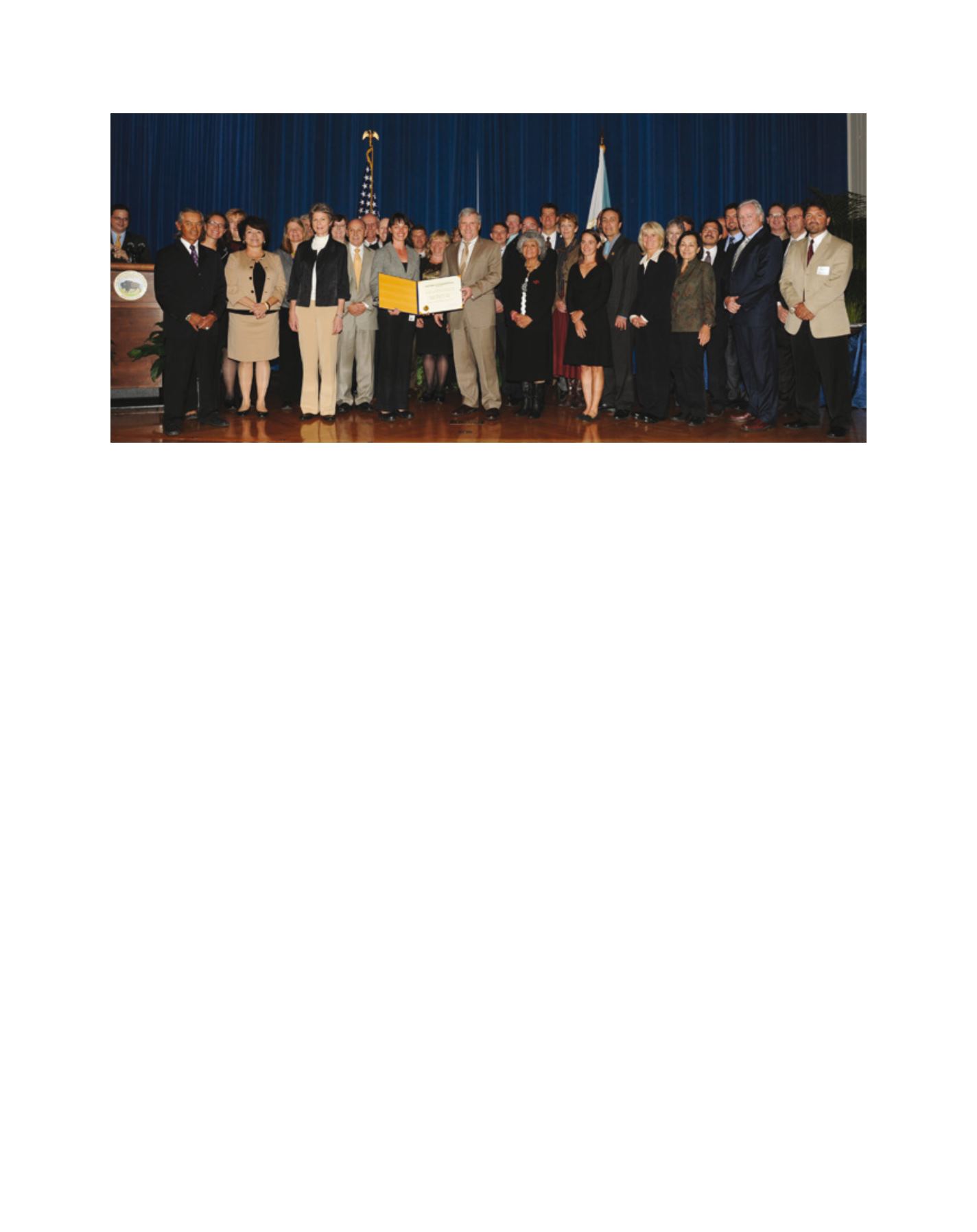

[
] 118
W
ater
E
ducation
and
I
nstitutional
D
evelopment
Thus, the study sheds light on the benefits of coordi-
nated, preventative strategies that have multi-resource
benefits while also opening the question of acceptable
levels of risk and risk management.
Following completion of the study in late 2012,
Reclamation hosted a final public webinar on the
Internet that drew more than 200 participants for
the approximately two-hour event. In response to
strong interest and desire for additional detail, a
public outreach effort followed. This consisted of two
workshops in major population centres in the basin,
and another webinar. All were open to the public and
lasted around four hours between presentations and
questions. Despite the length and highly technical
nature of these workshops, participation numbered in
the hundreds.
Recognizing the need to build on this interest and
collectively move forward, a ‘next steps’ phase has been
launched. Specifically, several work groups have been
chartered to advance strategies found to be cost-effec-
tive and provide a wide range of benefits to all water
users. The next steps of the study aim to advance the
existing technical foundation while maintaining the
same broad, inclusive stakeholder process employed
throughout the previous three years.
For the Colorado River basin, successes such as
this recent study are not possible overnight. Time and
commitment are necessary to forge the relationships
and tools to tackle challenging issues in a complex
river basin. Tools and technical capability can quickly
become obsolete as science and methods evolve.
Stakeholder groups and staff also change, which impacts
relationships formed over time. Continued discussion
and continued activity, through periods of abundant
flows and periods of drought, are essential to safeguard
the future of communities, economies and ecosystems
supported by the Colorado River.
quantified demands numerically by region and use type to follow the
narrative. In total, six demand scenarios were quantified. By the end
of the study period, without action, the imbalances between water
demand and supply have the potential to be quite large.
The next phase of the study involved a public solicitation of
options and strategies to resolve the imbalances resulting from the
supply and demand scenarios. Through regular outreach efforts that
included a website, an e-mail list and routine webinar updates, the
public and other groups not directly involved were kept apprised of
the study progress. By the options and strategies phase, the e-mail
distribution list was more than 800 addresses long. This list was
used to publicize the open solicitation and further affirmed the bene-
fits of outreach beyond major stakeholders. Through this process,
more than 150 submissions were received, ranging from augmenta-
tion to water conservation to alternative management approaches.
The submitted options were grouped, standardized where appropri-
ate, and rated on factors such as cost, reliability and energy needs to
facilitate inter-comparison.
In the final study phase – the vulnerability analysis – the CRSS
model was used to evaluate the potential vulnerability of six resource
categories: water deliveries, hydropower, recreation, ecological
resources, water quality and flood control. Metrics to evaluate these
resources and associated thresholds for vulnerability were developed
by seeking input from relevant stakeholders and field experts. The
assessment considered all future supply and demand combinations,
first without options and then against several ‘option portfolios’. These
portfolios represent different strategies (for example, low energy foot-
print) by including only options that meet certain rating criteria. Four
distinct strategies were developed through an iterative process involv-
ing study partners and stakeholders to facilitate an exploration of
trade-offs, rather than attempting to prescribe a solution.
In short, the study found that in the absence of timely action to
ensure sustainability in the basin, there is a strong risk of short-
ages in the coming decades. All of the option portfolios considered
reduced vulnerability across the six resource categories while
helping to close the supply and demand gap. However, vulnera-
bilities were never eradicated and in some cases persisted strongly.
Colorado River Basin Study collaborators receive the U.S. Secretary of the Interior’s Partners in Conservation Award in 2012
Image: Bureau of Reclamation


















